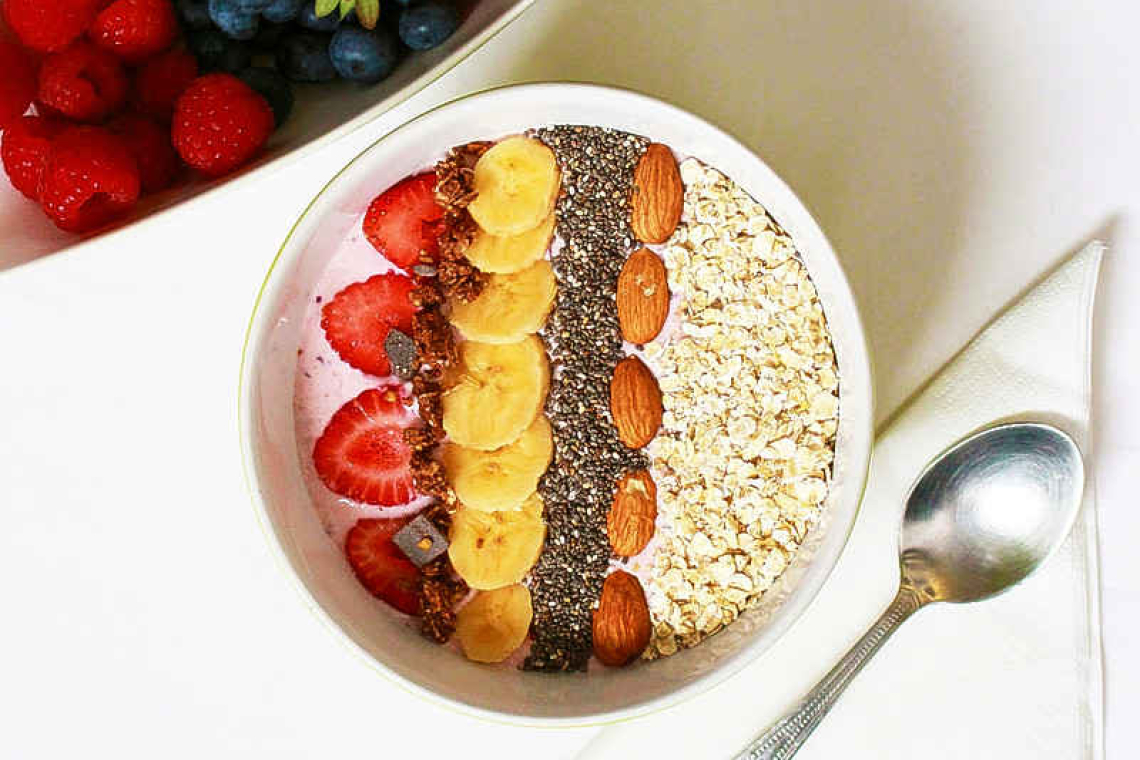By Dr. Colin Michie FRCPCH University of Central Lancashire
A small ancestral grain from Central America has been named the “golden seed for the 21st century”. Chia foods, recipes and snacks are multiplying. Kim Kardashian’s chia pudding was a Tik Tok sensation.
Chia seeds are the seeds of a mint plant, Salvia hispanica, also known as Mexican sage. They have been a staple food in Central America for thousands of years; their unique characteristics are still being uncovered. “Chia” is the Mayan word for “Strength”. Salvia plants can be grown in semi-arid soils that are not practical for most other food crops. At present, they are underused by us in our kitchens, or by industrial food processors.
Chia seeds are oilseeds – over 30% of each seed is fat. They are probably nature’s richest source of the omega 3 fatty acids which make up 75% of their fatty acid content. These fatty acids are required for our health, building and maintaining every cell wall, reducing damage such as inflammation and maintaining healthy pregnancies and deliveries.
Salvia’s chia seeds are gluten free and contain more protein than most cereals. Their proteins contain all the amino acids essential to our diet. Also in this seed are a team of active molecules including flavonoids, anthocyanins, vitamins, carotenoids, and minerals. These are packed into a seed with fibres that can absorb 12 times their weight in water when soaked for a few hours. Chia fibre makes a gel or gum that is invaluable as a functional food, a prebiotic promoting gut health.
Chia can be added as grain, flour or flakes to enhance staples such as maize or rice. It improves the dietary value of meals of ugali, for instance, promoting food security in developing countries. It is used in the manufacture of foods with a low glycaemic index too, such as tortillas or sugar-free jam. In wheat-based products these seeds are used to make snacks, soup, bread, pastas and desserts. When chia seeds are added to animal feeds, essential omega 3 fatty acids find their way into their meat, eggs and milk.
If you use chia seeds yourself, you may find them sprouting in the corner of the kitchen. Do not throw those seedlings out! Germination improves the nutritional value of chia, releasing amino acids, flavonoids and antioxidants including vitamin C and polyphenols. One of these, rosmarinic acid, is being carefully researched as an anti-infective and anti-inflammatory agent. Extracts of chia sprouts are being tested as a source of pharmacological-level antioxidants, a novel nutraceutical. But back in your kitchen, sprouts can be used in many dishes – in salads, soups, stir fries, omelettes or sandwiches. Or even employed as a chia pet!
Chia gel or mucilage can be made into films and coatings with antibacterial poperies; it can be used as an emulsifier or a foam. It is added to foods from chocolate to fruit spreads. As a thickening agent chia gums are better tolerated for clinical uses than other gums prescribed for those with difficulty swallowing.
So are there problems with using these tiny titans? Consuming too many chia seeds, whether dry or in a gel, may give you gastrointestinal discomfort – an effect from taking in too much fibre. Some have reported this after taking in large volumes of “chia water” that became infamous on TikTok – a spoonful of seeds in a glass of water. This will promote a sensation of fullness, but using such treatments in moderation is wise.
Chia can cause allergies too. These seem rare, with few case reports in the current literature. However, the use of new proteins in our diets will inevitably lead to allergic reactions to them, particularly if you already have an allergy to other seeds. Finally, it is likely that chia gums – made when the seeds become wet – may create a food matrix or mix that makes it difficult to absorb some vitamins in the bowel. So again, using chia in moderation seems reasonable.
No medical claims have been formally recognised for chia seeds, but social media note many “benefits”. So far, assertions that they are beneficial for chronic conditions such as diabetes or cardiovascular disorders are not supported by large trials. Published work has often been carried out using small numbers of subjects over short time-periods. Some researchers use crushed chia seeds, some uncrushed, in their studies. Storage conditions of seeds vary too. These factors will influence those crucial fatty acids; they will also make a difference to bowel metabolism and trial results.
As a nutritious additive to your meal plans, chia seeds have much to offer. Sprinkle them onto yoghurt, porridge, or a salad dressing to promote a feeling of fullness. You might even use pre-soaked seeds as a substitute for egg when baking. Chia could give you strength!
Dr. Colin Michie is currently the Associate Dean for Research and Knowledge Exchange at the School of Medicine in the University of Central Lancashire. He specializes in paediatrics, nutrition, and immunology. Michie has worked in the UK, southern Africa and Gaza as a paediatrician and educator and was the associate Academic Dean for the American University of the Caribbean Medical School in Sint Maarten a few years ago.







